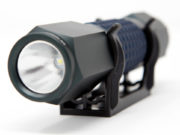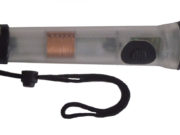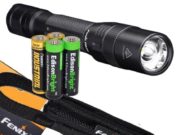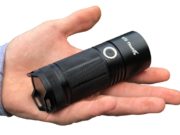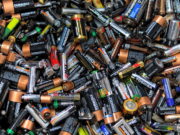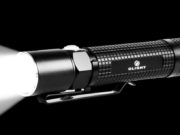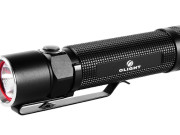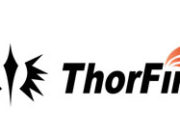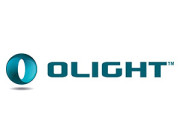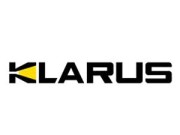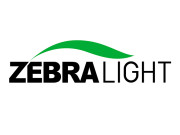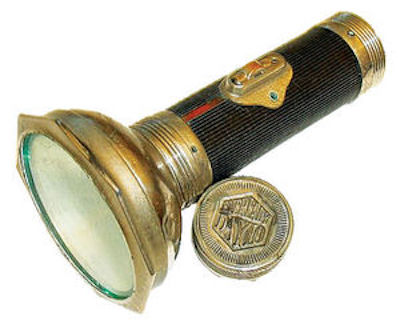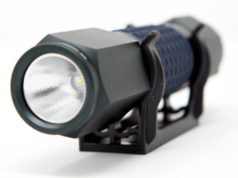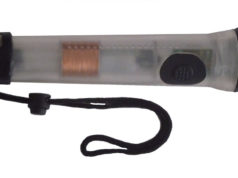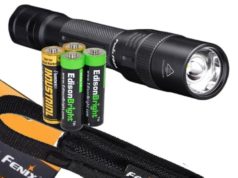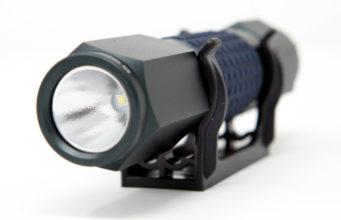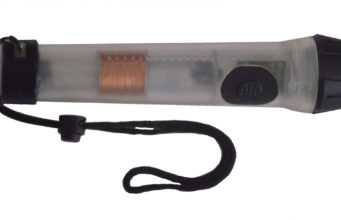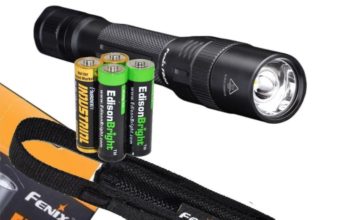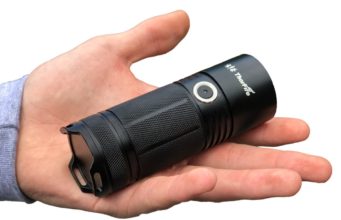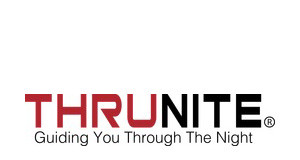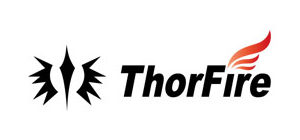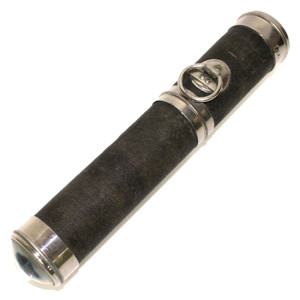
As with many technologies, one new invention can lead directly on to another. So it was with the modern flashlight, which was dependent on the invention of the first dry-cell battery in 1896.
The dry-cell was an improvement upon previous batteries due to the fact that the electrolyte was a paste instead of a liquid and therefore could work in any position with less of a chance of leaking. Perfect for use in something that was meant to be handheld and waved around.
As a result of these developments, British inventor David Misell invented the first flashlight two years later in 1898. It was very basic and consisted of a paper tube with three D batteries laid front to back, with an incandescent light bulb at one end and a brass reflector at the other. A spring-loaded, momentary contact switch turned the flashlight on and off.
Patents
The American Electrical Novelty and Manufacturing Company – a company manufactured and marketed battery powered novelties, for example light-up neck ties and flower pots, took an interest in the flashlight after its founder Conrad Hubert met David Misell in 1897.
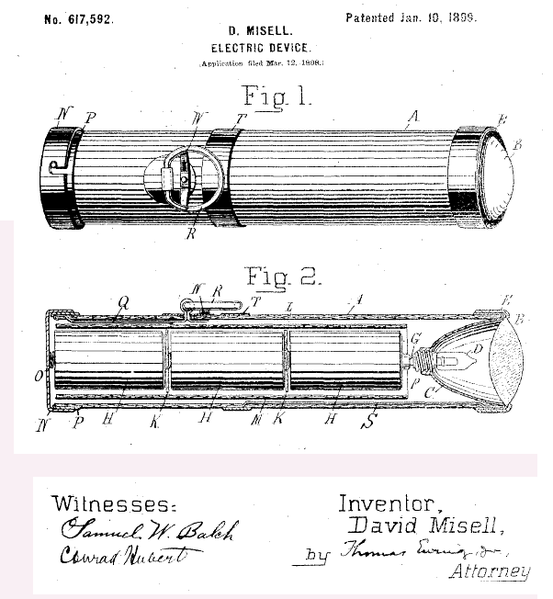
Hubert bought all of Misell’s previous patents related to lighting as well as his workshop, and his then unfinished invention which was to become the tubular flashlight. In 1899, Hubert donated some of these devices to the New York City police, who responded favorably to them.
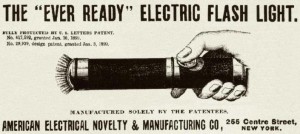
The invention came to be known as the ‘flash’ light as it had to keep being turned off to rest. The zinc-carbon batteries then available could not give constant currents for long periods of time. The flashlight did not initially sell well due to the unpredictable batteries and the inefficiency of carbon-filament bulbs.
The development of the tungsten-filament lamp in 1904 as well as improved batteries proved a turning point in flashlight history and took them from an expensive novelty into a popular and useful device. They provided instant control and did not have a flame which left them far safer and convenient than the oil and kerosene lamps people had used until that point.
Ever Ready
In 1906, the National Carbon Company which had supplied Hubert’s company with the materials for their flashlights bought a half interest in the company for $200,000. The company remained essentially the same in every way but changed its name to ‘The American Ever Ready Company’, which was shortened to ‘Eveready’ and is now known as ‘Energizer’.
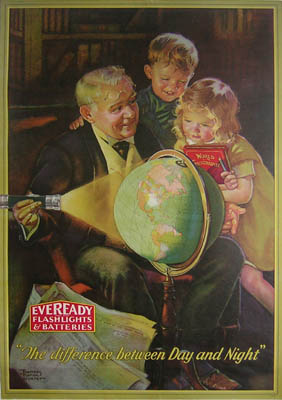
Eveready produced a brochure in 1916 entitled ‘101 Uses for an Eveready’ insisting that the flashlight was now an essential personal item – “the light that does not flicker in a draught, extinguish in the wind, and is controlled instantly by finger pressure. It’s the light everyone needs.”
Some of the uses included reading fruit labels, filling the tank of a gasoline stove, examining a refrigerator’s interior and signaling with Morse-code.
By 1922, several different types of flashlights were available. Aside from the tubular hand-held variety, there was a lantern that could be set down for extended use, pocket size lamps and large reflector searchlights. By the early 1920s, over 10 million US citizens used flashlights. By the end of the 1930s, the Chinese had 60 companies manufacturing flashlights. The increasing popularity of flashlights also contributed to the success of the incandescent light manufacturing business.
LEDs hit the scene
Contemporary flashlights have changed little since their invention. However, in 1999, Lumileds Corporation of San Jose, California, succeeded in creating a high-power white-light emitter called the Luxeon LED. Many companies began inventing LED powered flashlights as they had more power and a better running time than incandescent flashlights. The first Luxeon LED flashlight was the Arc LS, designed in 2001.
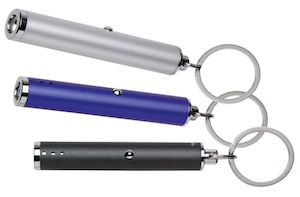 Over the years, flashlights have proved one of the most useful inventions of all time. They exist on keychains and pens; they can be used as headlamps on helmets. Some come with clips to mount on rifles as high power reflectors. And nowadays, they even come on mobile phones. All different, yet all still recognisable as developments of the original tubular flashlight.
Over the years, flashlights have proved one of the most useful inventions of all time. They exist on keychains and pens; they can be used as headlamps on helmets. Some come with clips to mount on rifles as high power reflectors. And nowadays, they even come on mobile phones. All different, yet all still recognisable as developments of the original tubular flashlight.
Sometimes the simplest inventions are the best. And so it’s proved as the humble flashlight powers on well into its second century of existence.

